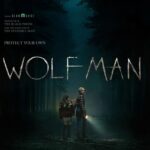
Here
Picture an old piece of land where a house stands the test of time. This place sees families come and go, starting way back with early humans, through to settlers, and finally, a modern African-American family. Inside this house, in the living room, life happens—everchanging yet somehow the same—full of husbands and wives, kids and grandparents.
Robert Zemeckis watches these lives unfold with a thoughtful eye. He frames each scene as if reshaping reality into something you’d watch on the big screen. The home serves as both a cozy hideaway and occasionally as an uneasy cage. It’s like a treasure trove filled with life’s ups and downs—where art begins, children are born, dreams take shape—or sometimes where it all quietly slips away.
The film messes with time—it doesn’t just move straightforward from past to present but gets mixed up like a puzzle or those Russian nesting dolls that hide surprises inside. It tells stories of families over years: happy times and sad moments; births and deaths punctuated by holidays like Thanksgiving or Christmas, marking our passage through life’s cycle. Characters muse about how fast time flies by—and suddenly what seemed endless turns out to be short-lived—a bit like catching glimpses out of your window while speeding past on a train like the Polar Express, reminding us we’re just along for the ride.
Imagine sitting there, watching a movie that feels both cozy and kinda suffocating at the same time. Zemeckis really knows how to hit you with deep thoughts on life, sneaking in reminders that death can just pop up outta nowhere. His movies often give nods to his other works: those boxes with the Allied logo? They might remind you of his earlier stuff. And did you catch ol’ Ben Franklin playing mad scientist on lightning duty? Totally brings back memories of Doc from Back to the Future. Or take a risky pilot facing danger—it echoes moments from Flight. Plus, you’ve got Tom Hanks and Robin Wright together again, stirring up feelings from their Forrest Gump days.
The only folks living it up without a care seem to be this artsy family—they’ve got this “magic” chair making life feel lighter than air. Zemeckis loves using feet as symbols; they show up all over his work. This time, he’s playing with life like a dollhouse in Welcome to Marwen style, trying to face down life’s scarier moments, especially the big D (death). And then there’s a powerful moment where we’re so wrapped up in the movie’s story that we almost miss noticing someone lying lifeless on the floor—right under our noses.
This film is like having a chat with an old friend who’s seen it all and still finds wonder in everything around them—a bit melancholic but sweet at heart. As Zemeckis turns 70, he reflects on a world full of surprises and fair bit of chaos: think sci-fi spins like Back to the Future or mind-bending adventures like Contact—he’s always made reality look just as strange as fiction ever was!
In a bunch of different movies, you see how characters transform in the wildest ways. Like in *Death Becomes Her*, some stay young forever through mysterious means. Then there’s the fun, crazy world of *Who Framed Roger Rabbit?*, where cartoon characters are real because they were just made that way. Think about *A Christmas Carol* with ghosts showing up to teach lessons, or *Pinocchio*, a wooden puppet with a big dream to become a real boy.
Other stories toss their characters into deep self-discovery mode—take *Cast Away*, for instance, where getting lost leads to finding yourself. In some flicks like *The Walk*, it’s all about taking insane risks, walking on thin lines above nothingness, symbolizing life’s tricky balance between joy and peril. Sometimes, like in *Allied*, characters dive into uncertain situations hoping everything lands just right. It’s chaotic and suspenseful, all wrapped up with life’s endless possibilities hanging by a thread!
To watch movies and TV shows online, please sign up with our partner, a legit streaming service.
Get Started ➔






